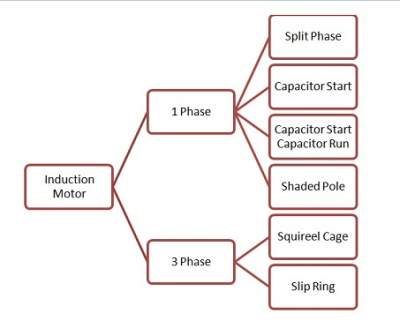Types of Induction Motor
Types of Single Phase Induction Motor:
Again, single phase induction motor may be classified on the basis of their construction and starting methods. On this basis, they can be further categorized into following types:
- Split Phase Induction Motor
- Capacitor Start Induction Motor
- Capacitor Start Capacitor Run Induction Motor
- Shaded Pole Induction Motor
Types of 3 Phase Induction Motor:
A three phase induction motor (IM) has two major components, Stator and Rotor. Stator is the stationary part whereas Rotor is rotating part. Load is coupled to the rotor shaft of the motor. Three phase armature winding is wound on the stator. When balanced three phase current flows through this winding, a constant amplitude rotating magnetic field is created in the air gap. This armature winding is connected to the 3 phase power supply and carried the load current.
Based on the rotor construction, it can be of two types: Squirrel Cage Rotor and Wound Rotor. On this ground, IM is also classified as
- Squirrel Cage Induction Motor
- Wound Rotor or Slip Ring Induction Motor

Comments
Post a Comment
Do not enter any spam link in the comment box.